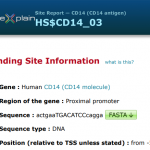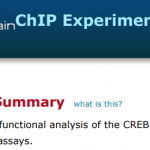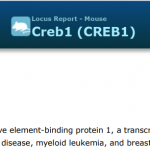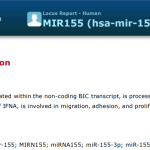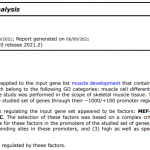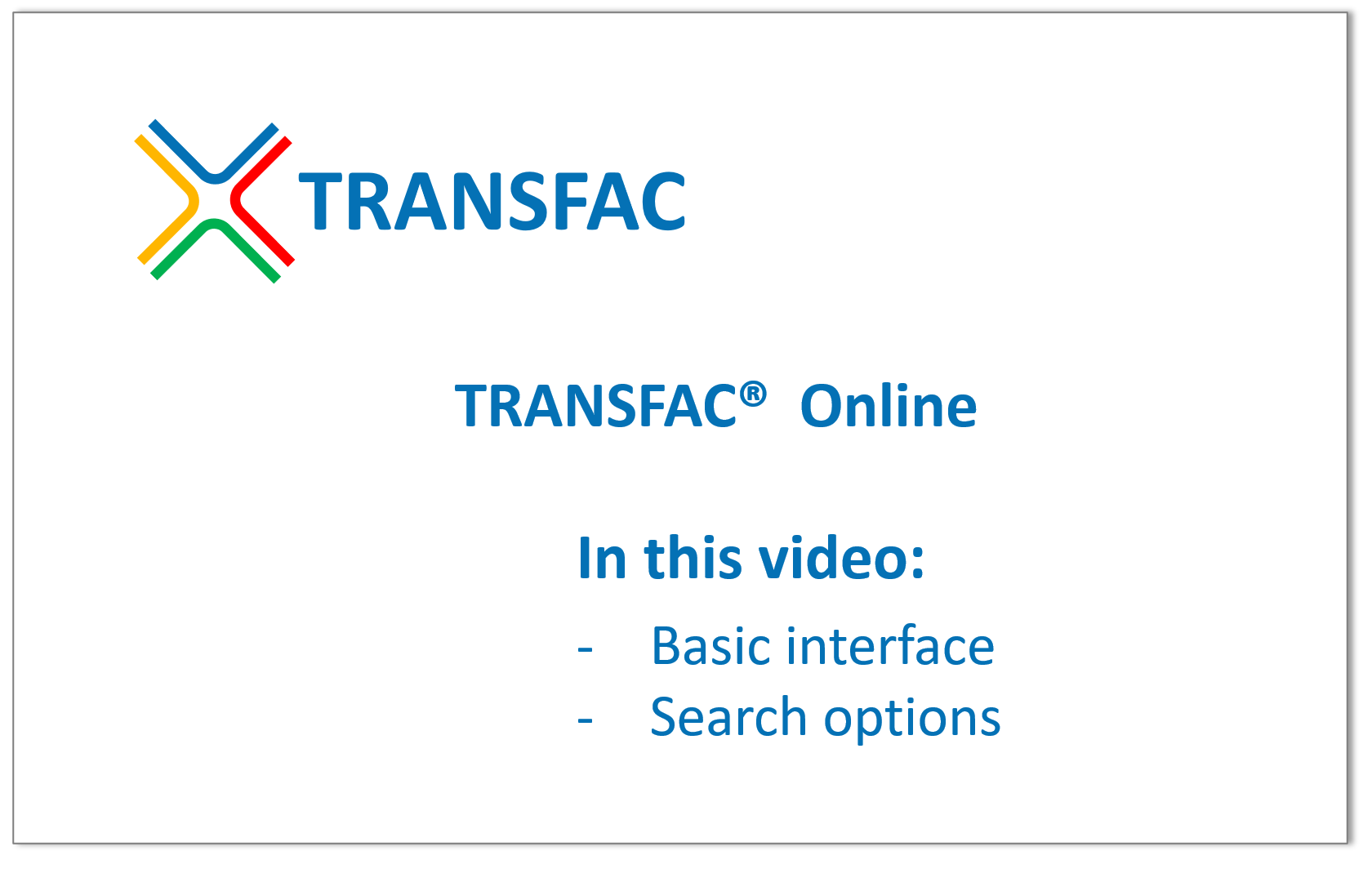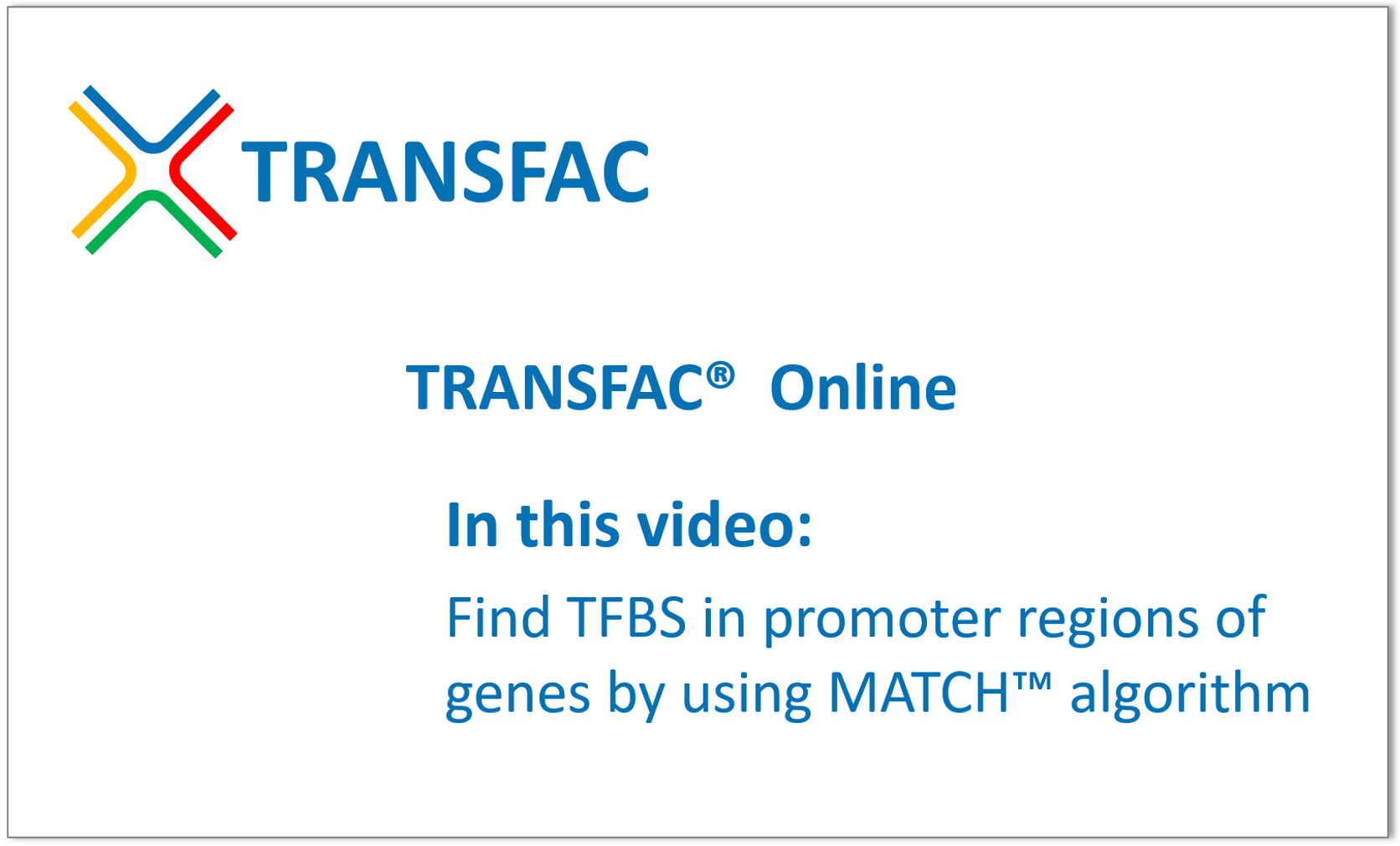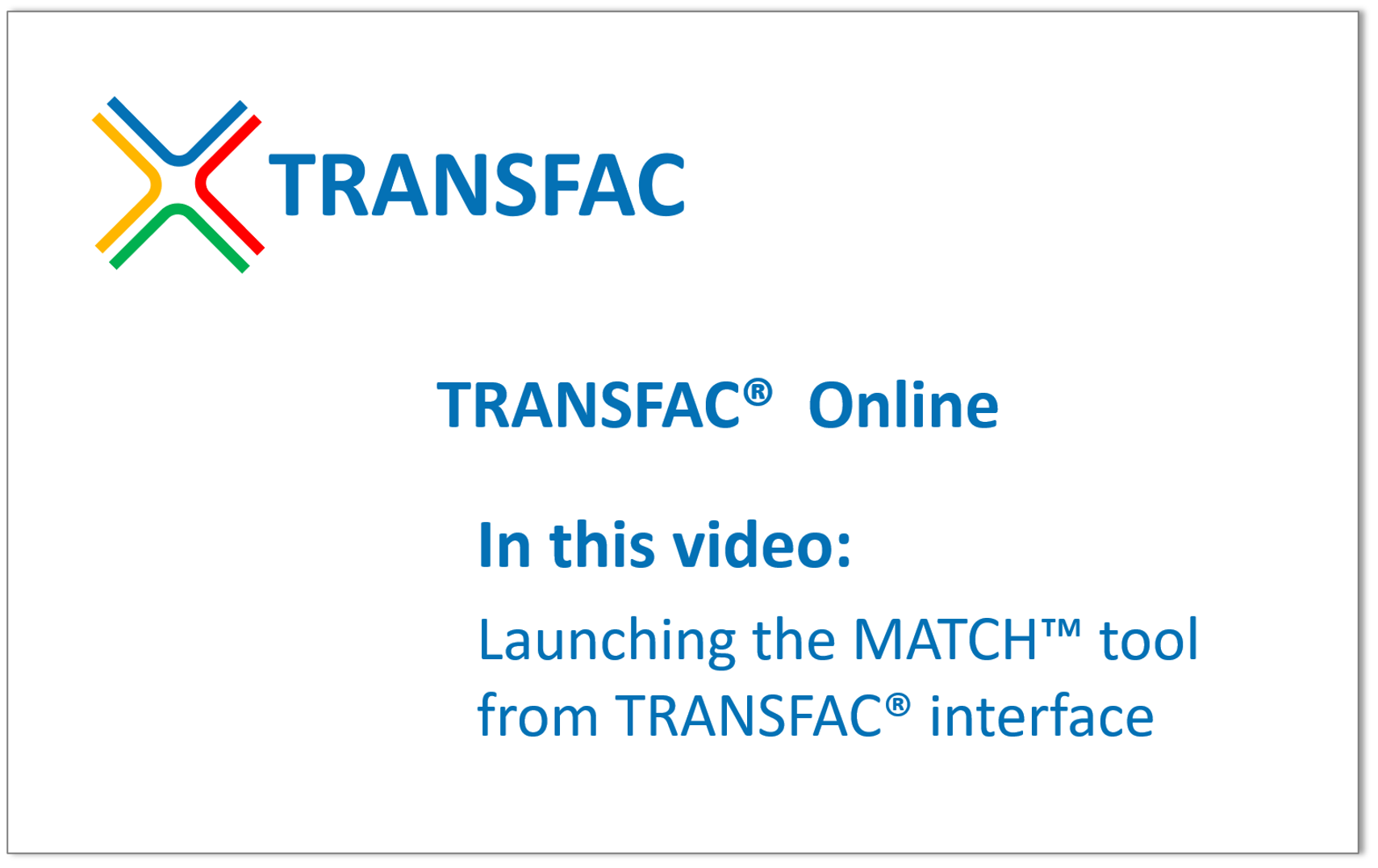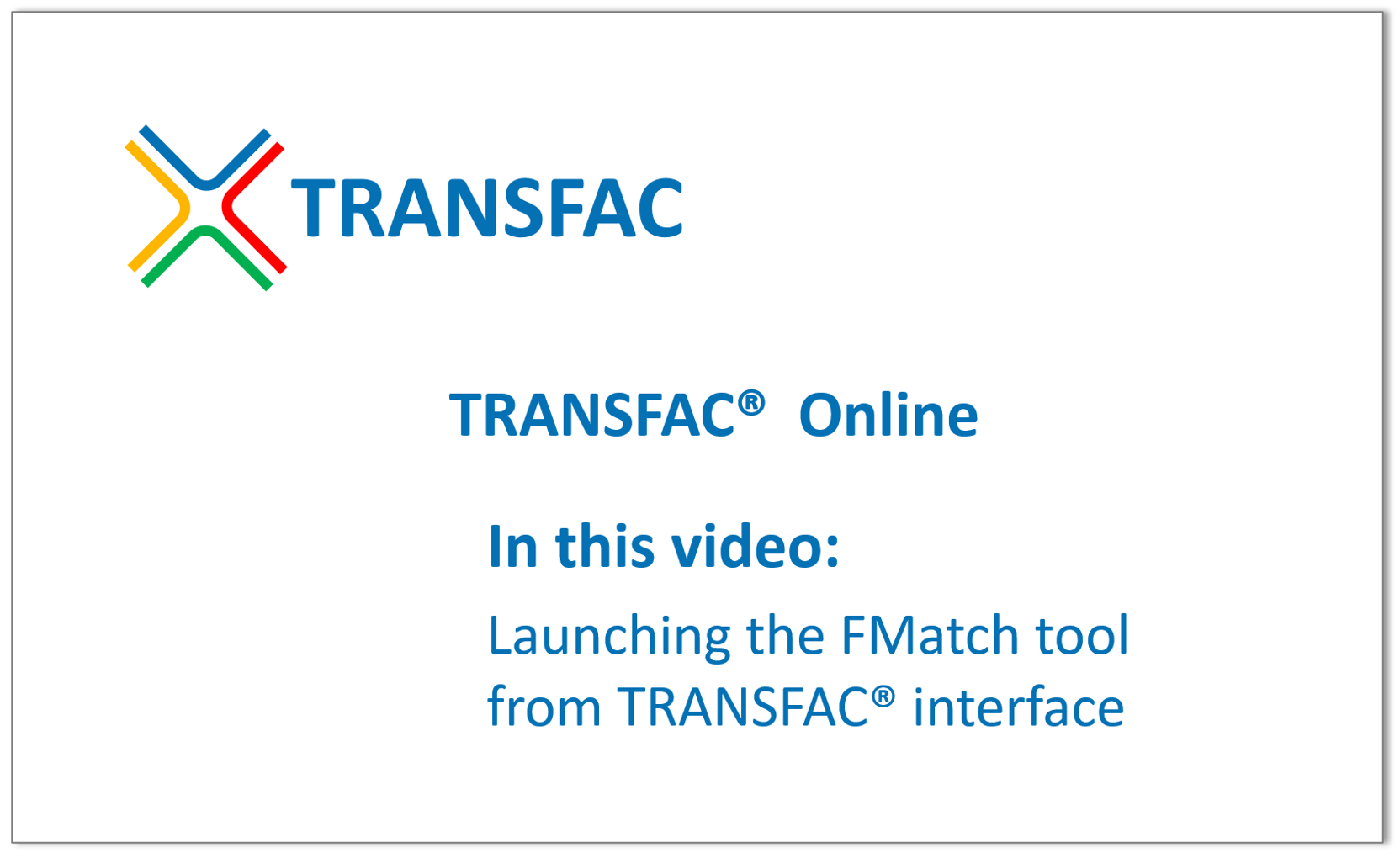TRANSFAC® release 2023.2
The TRANSFAC® database on transcription factors, their genomic binding sites and DNA-binding motifs (PWMs), contains these new data features:
· Integration of new human ChIP-Seq experiments from ENCODE
91 new human transcription factor binding site ChIP-Seq experiments released by the ENCODE phase 4 project have been integrated. The data sets comprise 1,029,262 fragments bound by 85 distinct transcription factors, of which 33 factors were not yet covered by ChIP-Seq data in TRANSFAC.
For 58 of the sets, an existing positional weight matrix for the respective transcription factor was used together with the MATCH tool to predict altogether 615,813 best binding sites inside the fragments.
Predicted best binding sites as well as complete fragments are available in FASTA and BED format via the ChIP Experiment Reports, as are lists of genes in a distance range to the fragments as specified by the user.
· New matrices derived from ENCODE ChIP-Seq data
24 new positional weight matrices for yet uncovered human transcription factors have been generated from new ENCODE phase 4 ChIP-Seq data and integrated into the TRANSFAC matrix library.
Most transcription factors (TFs) possess a DNA-binding domain (DBD), which mediates the recognition of specific, short DNA sequence elements in promoter, enhancer, etc. In order to approach the problem of deciphering the underlying DNA-protein recognition code, we have completely revised an earlier TF classification scheme (1,2) by adapting it to the wealth of data that were reported during the last ten years (TFClass; 3-5). TFClass has been implemented at the Dept. of Bioinformatics at the University Medical Center Göttingen (3,6).
Part of this work was done in the context of the
Syscol project, where our partner at the Karolinska institute (Prof. J. Taipale and his team) have characterized the DNA-binding profiles of more than 400 mammalian TFs (7). It will be tempting to compare the similarities of their matrices with the DBD classification reported here, and with our own approaches to classify DNA-binding profiles (8).
References
- Wingender, E., Schoeps, T., Haubrock, M., Krull, M. and Dönitz, J. (2018) TFClass: expanding the classification of human transcription factors to their mammalian orthologs. Nucleic Acids Res. 46, D343-D347. Link
- Wingender, E., Schoeps, T., Haubrock, M., Dönitz, J. (2015) TFClass: a classification of human transcription factors and their rodent orthologs. Nucleic Acids Res. 43, D97-D102. Link
- Stegmaier, P., Kel, A., Wingender, E., Borlak, J. (2013) A discriminative approach for unsupervised clustering of DNA sequence motifs. PLoS Comput. Biol. 9, e1002958.
- Jolma, A., et al. (2013) DNA-Binding Specificities of Human Transcription Factors. Cell 152, 327–339. Link
- http://tfclass.bioinf.med.uni-goettingen.de
- http://www.edgar-wingender.de/huTF_classification.html
- Wingender, E. (2013) Criteria for an updated classification of human transcription factor DNA-binding domains. J. Bioinform. Comput. Biol. 11, 1340007. Link
- Wingender, E., Schoeps, T., Dönitz, J. (2013) TFClass: An expandable hierarchical classification of human transcription factors. Nucleic Acids Res. 41, D165-D170. Link
- Heinemeyer, T., Chen, X., Karas, H., Kel, A.E., Kel, O.V., Liebich, I., Meinhardt, T., Reuter, I., Schacherer, F., Wingender, E. (1999) Expanding the TRANSFAC database towards an expert system of regulatory molecular mechanisms. Nucleic Acids Res. 27, 318–322. Link
- Wingender, E. (1997) Classification scheme of eukaryotic transcription factors. Mol. Biol. Engl. Tr. 31, 498-512. Link
Wingender, E., Schoeps, T., Haubrock, M., Krull, M. and Dönitz, J. (2018) TFClass: expanding the classification of human transcription factors to their mammalian orthologs. Nucleic Acids Res. 46, D343-D347. PubMed
Kaplun, A., Krull, M., Lakshman, K., Matys, V., Lewicki, B., Hogan, J.D. (2016) Establishing and validating regulatory regions for variant annotation and expression analysis. BMC Genomics 17 (Suppl. 2), 393. PubMed
Wingender, E. (2008) The TRANSFAC project as an example of framework technology that supports the analysis of genomic regulation. Brief. Bioinform. 9, 326-332. PubMed
Matys, V., Kel-Margoulis, O.V., Fricke, E., Liebich, I., Land, S., Barre-Dirrie, A., Reuter, I., Chekmenev, D., Krull, M., Hornischer, K., Voss, N., Stegmaier, P., Lewicki-Potapov, B., Saxel, H., Kel, A.E., Wingender, E. (2006) TRANSFAC and its module TRANSCompel: transcriptional gene regulation in eukaryotes. Nucleic Acids Res. 34, D108-D110. PubMed
Kel, A.E., Gössling, E., Reuter, I., Cheremushkin, E., Kel-Margoulis, O.V., Wingender, E. (2003) MATCH: A tool for searching transcription factor binding sites in DNA sequences. Nucleic Acids Res. 31, 3576-3579. PubMed
Wingender, E., Dietze, P., Karas, H., Knüppel, R. (1996) TRANSFAC: a database on transcription factors and their DNA binding sites. Nucleic Acids Res. 24, 238-241. PubMed
Knüppel, R., Dietze, P., Lehnberg, W., Frech, K., Wingender, E. (1994) TRANSFAC retrieval program: a network model database of eukaryotic transcription regulating sequences and proteins. J. Comput. Biol. 1, 191-198. PubMed
Wingender, E. (1988) Compilation of transcription regulating proteins. Nucleic Acids Res. 16, 1879-1902. PubMed



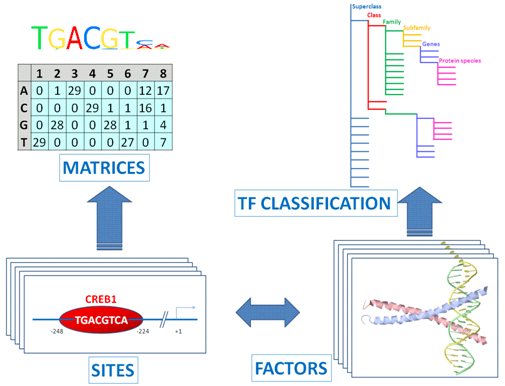 On top of each of these two domains, an abstract view on its contents is provided:
On top of each of these two domains, an abstract view on its contents is provided:
